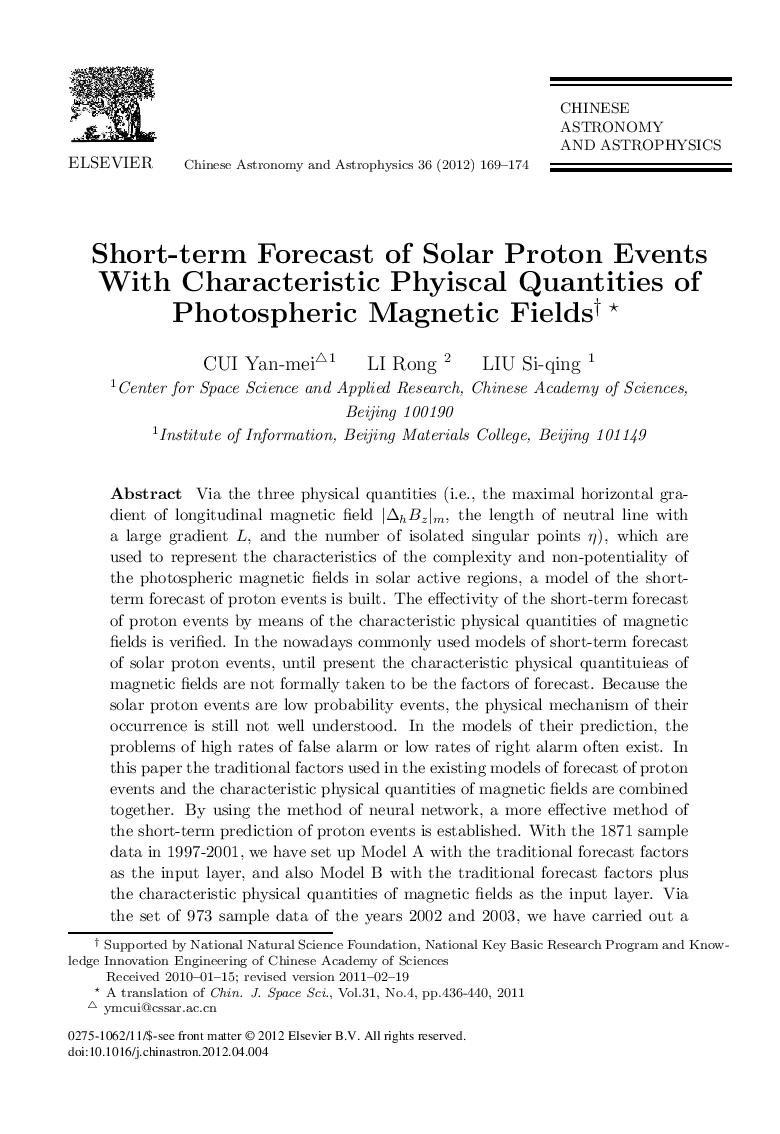| Article ID | Journal | Published Year | Pages | File Type |
|---|---|---|---|---|
| 1771764 | Chinese Astronomy and Astrophysics | 2012 | 6 Pages |
Via the three physical quantities (i.e., the maximal horizontal gradient of longitudinal magnetic field |ΔhBz|m, the length of neutral line with a large gradient L, and the number of isolated singular points η), which are used to represent the characteristics of the complexity and non-potentiality of the photospheric magnetic fields in solar active regions, a model of the shortterm forecast of proton events is built. The effectivity of the short-term forecast of proton events by means of the characteristic physical quantities of magnetic fields is verified. In the nowadays commonly used models of short-term forecast of solar proton events, until present the characteristic physical quantituieas of magnetic fields are not formally taken to be the factors of forecast. Because the solar proton events are low probability events, the physical mechanism of their occurrence is still not well understood. In the models of their prediction, the problems of high rates of false alarm or low rates of right alarm often exist. In this paper the traditional factors used in the existing models of forecast of proton events and the characteristic physical quantities of magnetic fields are combined together. By using the method of neural network, a more effective method of the short-term prediction of proton events is established. With the 1871 sample data in 1997-2001, we have set up Model A with the traditional forecast factors as the input layer, and also Model B with the traditional forecast factors plus the characteristic physical quantities of magnetic fields as the input layer. Via the set of 973 sample data of the years 2002 and 2003, we have carried out a simulative forecast, and found that under the condition that these two models possess the same rate of accuracy in the forecast of proton events, the rate of false alarm of Model B becomes evidently lower. This has further verified the effectiveness of the characteristic physical quantities of magnetic fields in shortterm prediction. Furthermore, this may improve the actual ability of forecast of solar proton events.
